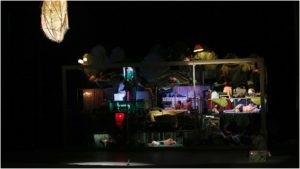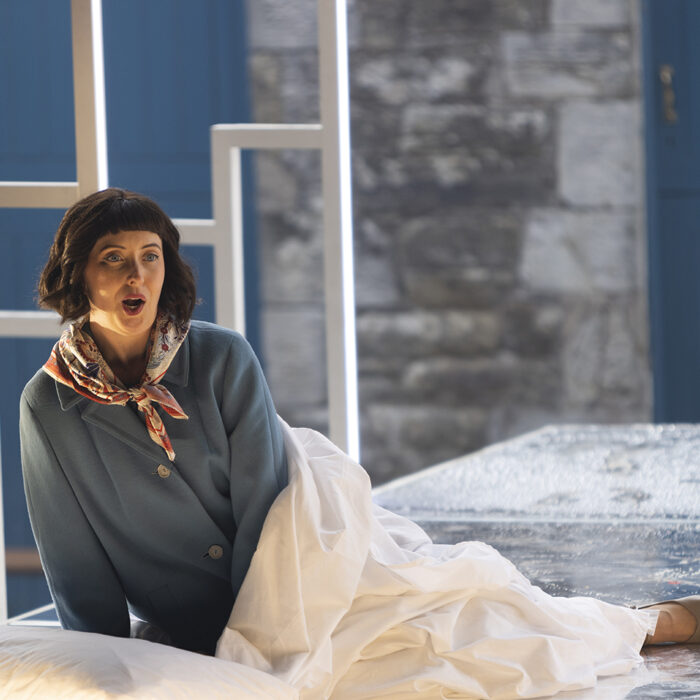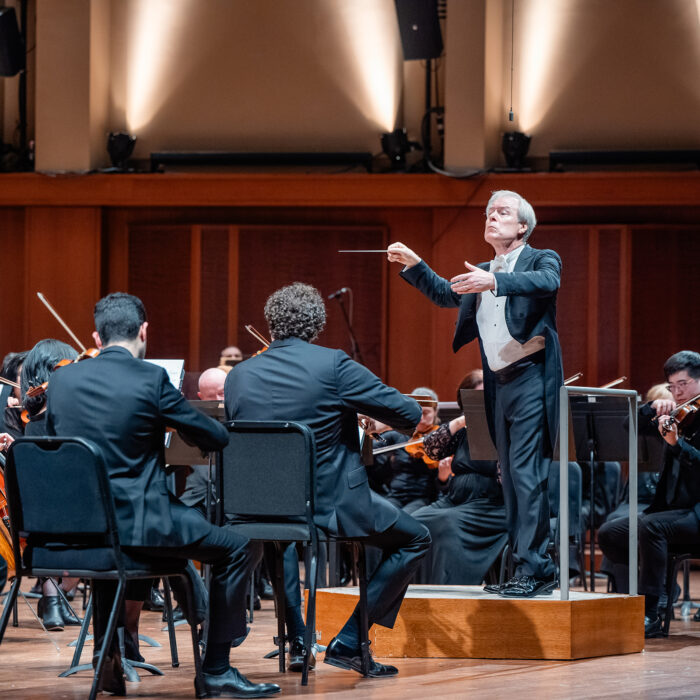
Palacio de Bellas Artes 2018 Review – El Juego De Los Insectos: Ibarra’s Opera Features A Fascinating Vision That Could Still Use Some Revisions
By Cesar Moreno Zayas“El Juego De Los Insectos” has finally had its premiere at the Palacio de Bellas Artes in Mexico City. The work was composed in 2008 and it took eight years to have the large scale, full orchestra production.
The opera, by composer Federico Ibarra, was created in 2007-08 with a libretto by Verónica Musalem, based on the “Ze života hmyzu (Play of insects)” by Karel and Josef Čapek. Including Ibarra’s opera, the popularity of the play has led to four different adaptations across four different countries. In 2009 it had its world premiere, albeit in a piano version.
The opera consists of a prologue, three scenes and an epilogue, which are distributed in two different acts. The opera starts with a homeless man, tired of humans and their corrosive ways, who enters the world of insects. There he discovers how sick and destructive the world of insects is also. The scenes depict an anthropomorphic insect world, starting with one of the butterflies. The butterflies represent the vanity and superficial behavior, packed with envy and jealousy that leads to conflict. Unfortunately, the underground world he ventures to next does not provide the better view, because it is the world of flies, beetles, parasites, larvae, and crickets. It is the world of fight, marriage, manipulation, and destruction of the weakest ones. The homeless is again sick and moves towards the last world, dominated by ants. There he finds war, violence, and power conflicts. After his adventure, the homeless man returns to the human world to reflects on finding a better world.
The homeless man was performed by an actor, Joaquin Cosío, in a non-singing role. This choice serves to separate him from the world of the insects. Cosío’s performance was defined by clear diction as well as solid interaction with his environments. He also interacted well with the audience, a major part of his performance.
The cast was very big, but the major standouts were Cynthia Sánchez who sang Mrs. Cricket, Penelope Luna as Chrysalis, and Norma Vargas as the Engineer.
Mrs. Cricket tells the story of a pregnant female cricket, who is happy to find a house together with her husband, but. She is cheerful and full of hopes, but eventually, she dies when the larva eats her. She had good acting skills, and great and convincing singing, always clear and effective for the purpose of the drama. We have a character that moves from the extreme happiness to the desperation, and she, with good technique, deals adequately with the score.
As the Chrysalis, Luna was always hidden away, but her clear voice and good technique made her presence felt every moment she sang. She showcased a beautiful soprano that established the sweet, gentle, trustful voice for a character that represents the new generation – hope for the future.
Norma Vargas took on the role of female engineer who rules the factory/country of the red ants and who orders the attack on the yellow ants. The mezzo-soprano’s interpretation was elegant, fancy, bossy, and dictatorial, which was explored with a clear and concise voice.
The chorus, under choral director Alfredo Domínguez, was also in top form, particularly during the ants scene. The orchestra, conducted by Guido Maria Guida, was vibrant. It is difficult to bring a new score to life, and the conductor was able to provide a good performance to be a reference for future attempts at the work.
The Music
Ibarra’s music is eclectic. Sometimes, it sounds to Kurt Weill. Sometimes it is minimalistic. At other times, it is clear he is experimenting with harmony. Unfortunately, this particular opera has good potential, but it requires some revision to the score. The opera is almost three hours long, with an interval, but there are moments that feel repetitive and tiresome. The libretto by Musalem is good but it also suffers from a sense of “we’ve already been here” before. It could use some trimming to provide conciseness to the story.
That said, the production was fantastic. Director Claudio Valdés Kuri, alongside stage designers Auda Caraza and Atenea Chávez, lighting designer Victor Zapatero, costume designer Jerildy Bosh, and choreographers Alicia Sánchez and Bárbara Foulkes, have created a visually impressive and complex work. The world of the butterflies showcased a huge lighting bulb around which butterflies congregated. The second scene featured a three by three blockhouse, featuring crowds of insects fighting for their lives (see the picture above). Finally, the world of the ants appears in a factory of sorts with different bridges that become ramps at times. The movement played on the plot’s own developments to strong effect. The choreography employed during the ant scenes created the effect of big mobs of ants.
Ultimately, this was a memorable experience, but one that would benefit from revisions to tighten the experience for the viewer.


